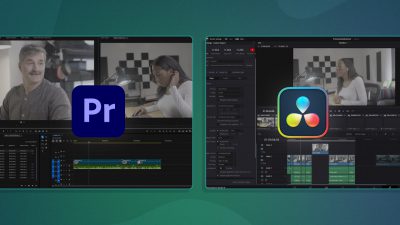Note: We tried to avoid any specific spoilers in this post. Nevertheless, reader beware if you haven’t finished watching Stranger Things yet.
If you’re like millions of Americans, you just binge watched eight episodes of Stranger Things, the runaway success on Netflix last weekend. You might have even rewatched it while shamelessly ordering more pizza, but we’re not here to judge.
With only eight episodes in the first season, Stranger Things didn’t have a lot of time to get through their storyline. And, with relative newcomers as the writers and directors of the show, the Duffer Brothers needed to quickly achieve one of the most difficult things ever with online video – get people’s attention, and keep it.
Here’s how they pulled it off.
The Hook
Part of why Stranger Things gained traction and captured everyone’s attention so rapidly is its impeccable homage to classic sci-fi movies and growing up in the early 80s, not to mention its killer soundtrack, and beautiful cinematography.
Another, bigger part is that the first eight to ten minutes of each show literally grabs you by the seat of your pants, and doesn’t let you look away. Although it’s hardly non-stop action, the suspense keeps you enthralled for the remainder of the episode, usually with a cliffhanger ending to ensure you’ll keep watching.
The secret here is the pacing of the show, which we’re going to break down in detail, as well as how you can replicate it for your own videos.
What is Pacing?
In general, pacing refers to the cadence of how a story unfolds on camera, and is conveyed with video editing techniques, script-writing, and different camera angles. The way a shot is framed, how quickly you jump to the next scene, the speed of the action, and the dialogue all contribute to the pacing of a film.
Sure, their time working with some of the greats behind recent hit TV shows may have helped. But, the Duffer Brothers have an unbelievable knack for pacing. The four key elements of pacing in film consist of symmetry, pattern, flow and timing, and you can easily recognize each of them in every episode of Stranger Things once you learn what they are, and keep a sharp eye out when you rewatch it for the umpteenth time.
Sweet Symmetry
In film, symmetry is essentially the finely-tuned balancing of the story arc, and when done well, means that what goes up, will come down.
Where Stranger Things excels with symmetry is really the broader arcs of the story line. Although not every character gets quite the same level of attention to detail in this series, Stranger Things does an excellent job of maintaining symmetry for the major characters and narratives.
As a result, it could be a standalone single series, and a highly successful one at that, since the main loose ends were all tied up at the end of the season. That being said, there have been strong hints at a Season 2, and we’re planning to devote hours of our time practicing making popcorn in anticipation of that.
Perfect Patterns
Each episode starts not with Stranger Things’ relatively lengthy opening credits, but with 8-10 minutes of heart-pounding intrigue that leave you thinking “Wow – I have to see what happens next.” This pattern is consistent, and the thrilling intros are gripping, helping to keep everyone’s eyeballs glued to the screen.
When the opening credits start, which are about 45 seconds, it’s more like a chance to catch your breath, and process what just happened, than a boring interlude. This pattern of sprint – relief – sprint recurs throughout each episode, although the amount of build-up to each period of thrilling action, and subsequent calm, varies quite a bit.
Timing
A lot of the credit for this goes to the editors of the show (Kevin D. Ross and Dean Zimmerman), and throughout each episode, you’ll notice instances where a change in scene is linked very clearly by a clever cut, whether visual or audible.
The timing of those cuts, and the selection of the exact frame that’s used, is nothing short of an art form. When done well, it also carries the viewer seamlessly from one scene to the next, and importantly, brings their emotional state along for the ride as well.
Flow
Closely related to the sprint – relief – sprint pattern established with the spacing of action sequences, flow refers primarily to how the tempo shifts throughout a video.
Flow also has a lot to do with why there is minimal wasted dialogue in any series. For instance, maintaining a certain tempo is partly why characters rarely exchange goodbyes on the phone on TV.
Imagine if the rapidity of cuts didn’t change at all during an episode. It wouldn’t impart the same emotional response to the audience because urgency, calmness, happiness, or fear aren’t communicated with the same visual techniques.
In our opinion, Stranger Things flows very well, and as a result, manages to build a masterful level of suspense within episodes, and across the whole season.
Put Your Videos Through Their Paces
This is the fun part – here’s how you can put these principles into action to improve the emotional connection with your audience, and drive engagement with video.
Proper Planning
Picture a river flowing down hill steadily, bending around curves, hitting some rapids, then a waterfall, and finally calmly pooling below. This is analogous to how a video should feel when your pacing, and all the elements entailed, are on point.
Work through each of the four factors of pacing in a methodical way to ensure you’re getting it just right. Symmetry and patterns should be hammered out during the conceptualization, story-boarding, and script-writing phases of your production, while timing and flow are more relevant to the post-production phase.
That being said, each of the four informs the other three, so expect to review your work at every stage of the process to make sure you’re working towards the desired effect.
Symmetry
Start with the arc of your story, and continue to break it down for each scene and each character, until you have layered symmetry.
This means starting at the top with your central plot line, and planning all the way through how you want it to wrap up at the end. From there, map out each major scene, and determine where it should occur in the timeline of your video to support your central story arc. Continue in this manner by taking each character in turn, and considering their personal story, and how it will impact the balance of your narrative. This careful approach will help you avoid any unintentional loose ends.
When you get into the nitty-gritty of storyboarding and imagery, you can build symmetry into your video with visual and aural symbolism, such as the way Stranger Things uses lights across several episodes, or similar sounds to transport viewers from scene to scene.
The script is also very important to symmetry, and should reflect the build-up, climax and conclusion of each arc in terms of the tone and nature of the conversations and action taking place.
Also, sometimes what isn’t said on camera is just as meaningful as what is communicated directly to the audience. For example, whatever Bill Murray whispers to Scarlett Johansson at the end of Lost in Translation is one of the most powerful moments in that film, but utterly unintelligible.
Patterns
Once you have gone through your story line and script for symmetry, consider whether or not a particular pattern might emerge. Patterns can be created by rotating through characters, locations, narratives, tempos, or jumping forward or backwards in time.
Patterns can also be embellished for viewers with music, types of lighting, colors, or the way certain shots are framed. As a really classic example, think of how Jaws used music to establish a pattern (music = shark), the shock that resulted when that pattern was broken, and the lingering suspense the audience experienced knowing the music no longer reliably signaled the presence of the shark.
Timing
The amount of time a camera lingers on a scene has a direct impact on the emotions it will impart to the viewers, and the perceived significance of what’s unfolding on camera. Basically, you’re looking to cut between scenes in a manner that supports the desired pacing of your video, which will ramp up the emotional response your viewers have to a particular scene.
Timing can be easily manipulated to support the pacing of your video. For instance, you might want to use similar quick cuts for action scenes, and long, slow panning shots for characters’ back stories. B-roll footage is also definitely your friend here, since it can add length to scenes, or fill in missing gaps in your pattern.
To really get timing right, consider whether any of your clips contain any dead weight. Think about when a newscaster cuts to someone on location for a live feed, and there’s an awkward pause due to the lag in getting them on the air. That exactly the type of dead weight you want to do away with. If a scene, moment, or clip doesn’t add directly to the plot or the pacing of your film, cut it.
Flow
We saved flow for last, because in many cases, it’s best reviewed when your video has largely come together, and you want to check it for any dissonance or irregularities as a whole. The flow of a video is a bit more nebulous than the other factors that contribute to pacing: ultimately, it should just feel right.
One way to analyze the flow of your video is to imagine it having an audible tempo, sort of like a metronome. Is it all over the place, or is there a nearly melodic pattern emerging? Hint: you’re probably aiming for more of a pattern, or at least consistent changes in tempo as the scenes unfold.
Similar to the example from Jaws, you can also grab your audience’s attention by raising or lowering the tempo in a way that directly opposes the nature of the scene. Think of a slow motion fight scene, or the snappy montages interspersed throughout Snatch for relatively boring action, like traveling on an airplane.
If you put these tips for proper pacing into action, let us know how it turned out in the comments below!








